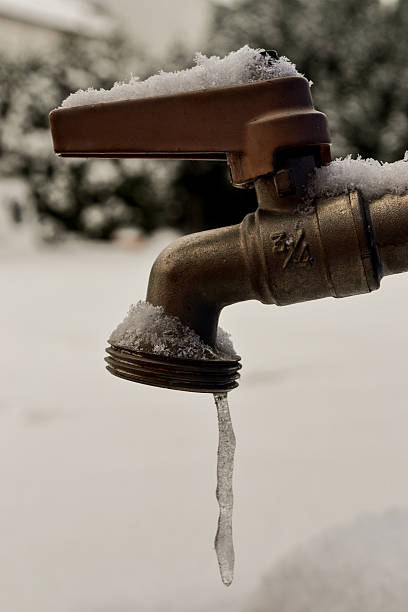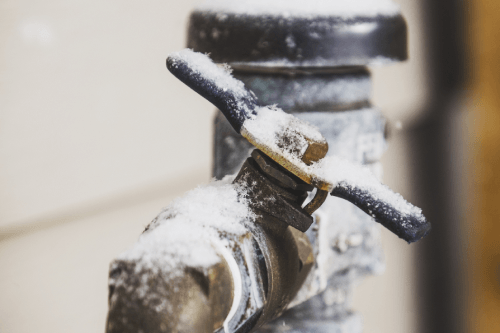How to Safeguard Your Plumbing from Freezing: Key Advice
How to Safeguard Your Plumbing from Freezing: Key Advice
Blog Article
In this article underneath you'll find lots of amazing points involving How to prepare your home plumbing for winter weather.

Winter can ruin your plumbing, especially by freezing pipelines. Right here's exactly how to stop it from occurring and what to do if it does.
Introduction
As temperature levels decline, the risk of icy pipelines boosts, potentially resulting in expensive fixings and water damages. Recognizing how to avoid frozen pipes is vital for house owners in cold environments.
Recognizing Icy Pipes
What causes pipelines to ice up?
Pipes freeze when exposed to temperature levels below 32 ° F (0 ° C) for prolonged durations. As water inside the pipelines freezes, it broadens, taxing the pipeline wall surfaces and potentially triggering them to burst.
Risks and damages
Icy pipes can lead to water system disturbances, residential or commercial property damages, and costly fixings. Burst pipelines can flooding homes and create comprehensive architectural damages.
Indications of Frozen Pipes
Identifying icy pipes early can prevent them from breaking.
How to recognize icy pipelines
Try to find decreased water flow from taps, uncommon smells or noises from pipes, and noticeable frost on exposed pipes.
Prevention Tips
Protecting vulnerable pipes
Wrap pipelines in insulation sleeves or utilize warm tape to shield them from freezing temperature levels. Concentrate on pipelines in unheated or external locations of the home.
Heating strategies
Maintain indoor rooms appropriately heated up, particularly areas with plumbing. Open cupboard doors to allow cozy air to circulate around pipes under sinks.
Shielding Outside Pipes
Yard hoses and outside taps
Detach and drain yard tubes prior to winter season. Install frost-proof faucets or cover outdoor taps with protected caps.
What to Do If Your Pipelines Freeze
Immediate activities to take
If you presume frozen pipelines, keep taps available to soothe stress as the ice melts. Utilize a hairdryer or towels taken in hot water to thaw pipes gradually.
Long-Term Solutions
Architectural adjustments
Think about rerouting pipes away from outside wall surfaces or unheated locations. Include added insulation to attic rooms, cellars, and crawl spaces.
Updating insulation
Invest in top quality insulation for pipes, attics, and wall surfaces. Correct insulation helps preserve consistent temperature levels and decreases the risk of icy pipes.
Conclusion
Avoiding frozen pipes calls for proactive procedures and fast responses. By understanding the causes, indicators, and safety nets, house owners can secure their pipes throughout winter.
5 Ways to Prevent Frozen Pipes
Drain Outdoor Faucets and Disconnect Hoses
First, close the shut-off valve that controls the flow of water in the pipe to your outdoor faucet. Then, head outside to disconnect and drain your hose and open the outdoor faucet to allow the water to completely drain out of the line. Turn off the faucet when done. Finally, head back to the shut-off valve and drain the remaining water inside the pipe into a bucket or container. Additionally, if you have a home irrigation system, you should consider hiring an expert to clear the system of water each year.
Insulate Pipes
One of the best and most cost-effective methods for preventing frozen water pipes is to wrap your pipes with insulation. This is especially important for areas in your home that aren’t exposed to heat, such as an attic. We suggest using foam sleeves, which can typically be found at your local hardware store.
Keep Heat Running at 65
Your pipes are located inside your walls, and the temperature there is much colder than the rest of the house. To prevent your pipes from freezing, The Insurance Information Institute suggests that you keep your home heated to at least 65 degrees, even when traveling. You may want to invest in smart devices that can keep an eye on the temperature in your home while you’re away.
Leave Water Dripping
Moving water — even a small trickle — can prevent ice from forming inside your pipes. When freezing temps are imminent, start a drip of water from all faucets that serve exposed pipes. Leaving a few faucets running will also help relieve pressure inside the pipes and help prevent a rupture if the water inside freezes.
Open Cupboard Doors
Warm your kitchen and bathroom pipes by opening cupboards and vanities. You should also leave your interior doors ajar to help warm air circulate evenly throughout your home.

Do you enjoy reading about How to Prevent Your Pipes From Freezing? Leave a remark below. We'd be pleased to find out your suggestions about this write-up. In hopes that you come back again soon. Sharing is nice. You just don't know, you may be helping someone out. Thank-you for taking the time to read it.
Visit My Web Page Report this page